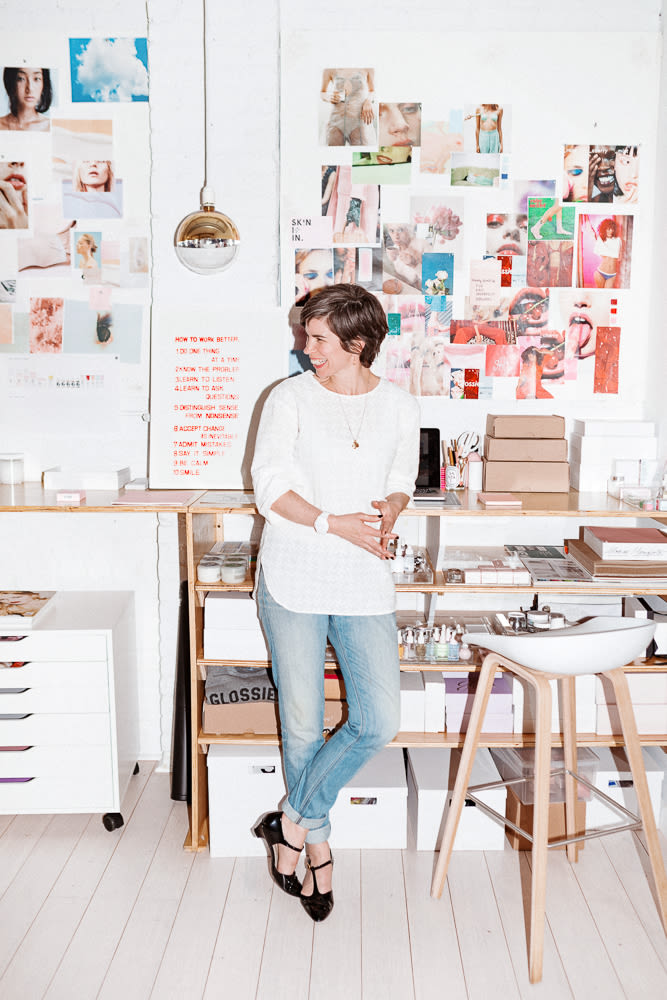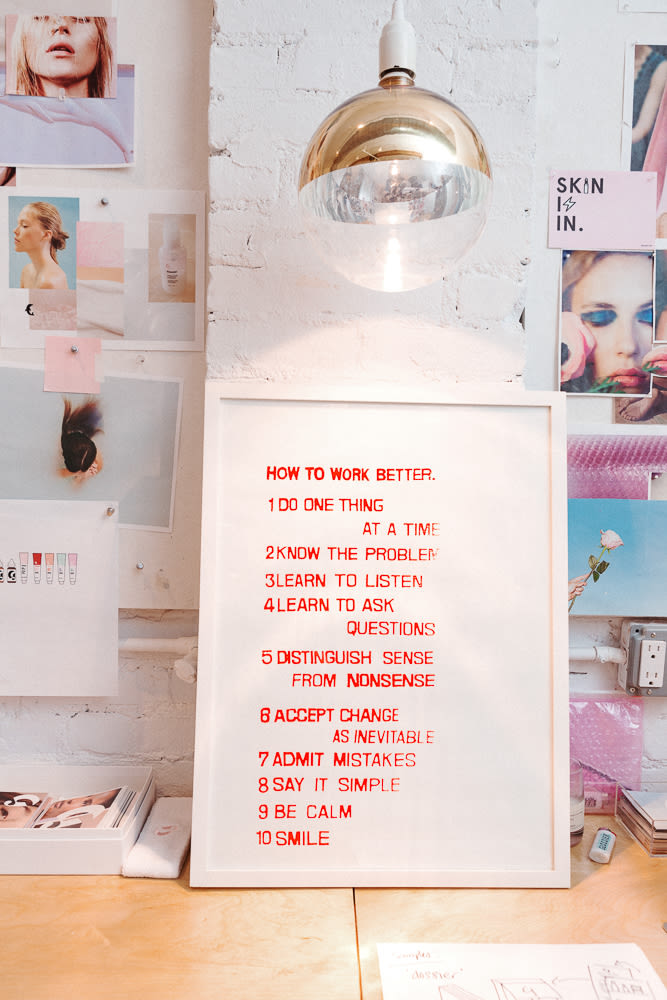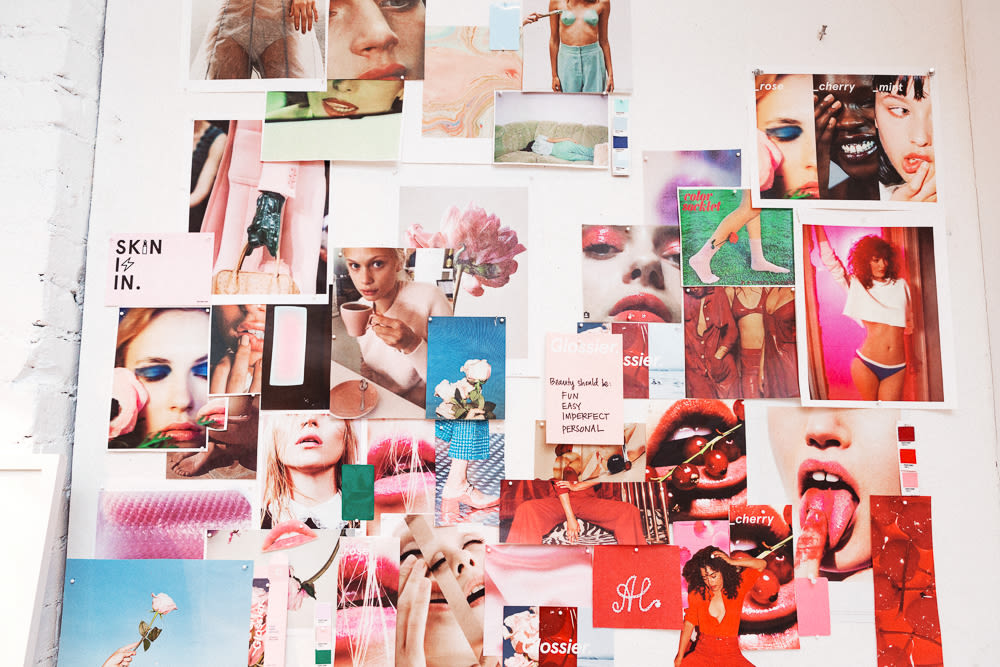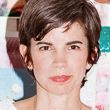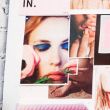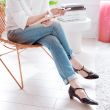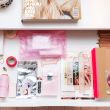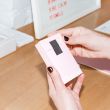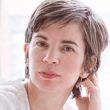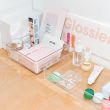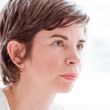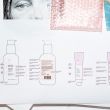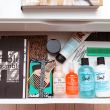“The road to becoming a Creative Director took a long time, not to sound ancient. I always wanted to do something artistic, but I also love problem solving. As an artist, you can work and have ideas and concepts—things that you want to communicate with people through your work on your own. I studied art, and I was always good at art, but I also liked solving problems. So out of my art foundation, I studied Graphic Design at the Royal College of Art. That was really what pushed my creative approach—it was all about ideas over form. As a graphic designer, you have to work with people in order to create something that makes sense for a client or for a project. I worked for a little family-run branding agency in London, and then in Utrecht, Holland. It was a small team with a start-up mentality, which I loved.
Eventually I moved back to London and started working on my own for clients. I realized pretty soon that working solo wasn’t for me—I loved working with and being inspired by others. So in 2000 I made it my New Year’s Resolution to move to the United States for a change. I’d never been before then! My boyfriend at the time—now my husband—didn’t think I would do it. It took me until October of that year, but I moved to New York and started working for a company doing branding and annual reports. I soon realized, though the people were great, it really wasn’t for me. I missed making more textural items, working across different dimensions, solving bigger problems, all that.
Not too long after I started there, I heard about an opportunity at Bumble and bumble—to me it seemed like such a cool company, and sounded like my perfect job. Funnily enough, the Creative Director got in touch with me about joining as their Design Director, so in 2001, I joined that team. Estée Lauder had already invested in the brand, so we were growing pretty fast at the same time. Michael [Gordon] had this vision for the office and salon downtown—the space was supposed to be the ‘House of Bumble.’ Everything was to be in the same building, from the products to the salon, the education, the branding and the marketing… So with that in mind, we started building out the Creative team. It was amazing to be in the same place as the hairstylists who were getting all their inspiration from backstage and editorial. There’s nothing wrong with looking around for inspiration and influences from other design, but I think you should go to the source to find out what they're doing. What does the product need to say to the person who’s going to be using it on their hair? What does the hairdresser want it to say? What’s the origin of the story? Start at the source.
I stayed there for 10 years and became the Creative Director. Throughout, I worked with a great team of designers, artists, and production folk. We did everything from products to buttons to retail spaces. Adriana, one of the lead creatives from Bb., is actually now the Head of Design at Glossier.
At Glossier, the source for us is a number of different places. It definitely feels like it’s editorial a lot of the time, but the inspiration also comes from the audience. We’re constantly thinking about who our girl is, who our audience is, and where we’re coming from in terms of our heritage. And as the Creative Director, it’s about being a conductor, keeping everything working beautifully together. We’ve got super talented designers and creators and art directors in the team, and we’re making a lot of things—content, products, the site, the emails… My responsibility is to not only help define the brand, but to help redefine it and edit as we continue to grow. We’re evolving constantly. We always know what is and what isn’t on brand, but you never want everything so fixed that nothing new or completely original can ever be thought of. It’s about creating a kind of harmony. Not to be cheesy.
I started chatting with Emily [Weiss] back in 2014—I’d left Bumble and had been working with Jawbone. At that point, it was really just looking at the early brand vision and taking it apart a little bit. She sent me photos of some packaging concepts and then some messaging she’d been working on, and I got where she was going. It was a bit like taking a pair of scissors, cutting up some of the ideas, and rearranging them. It was lots of fun, her vision was so inspiring. Then in late 2014, everything aligned and she and Henry asked me to join full-time as Creative Director. I think there’s a similarity between being Creative Director and being an editor—it’s spotting a great idea, spotting talent, encouraging people to do their best, and then helping to put it all together.
It sounds a bit like a moodboard, doesn’t it? [Laughs] Obviously we love moodboards, and that’s a big part of our process. That’s kind of how Emily built the brand! She had all these images she’s been collecting for years… That’s our North Star in a way. And when we start any project, like with the flavored balms for instance, the moodboards we build really help to tell the stories and convey the emotion of the product. So this time we literally started to turn them into collages, cutting things out and really rebuilding them. You can see the cutout lips pasted over the backgrounds and the environments, which we thought were very fun. They became the concept for the packaging. And sometimes you don’t need the whole image—you just need a piece of it. Maybe it’s those lovely, rich sumptuous roses or super shiny cherries. The flavored balms are more pop-y and fun than some of our other stuff, that’s by design. There’s one part of the mint collage that’s a photo of a girl’s mouth, biting on ice, overlaid on a photo of a glacier. The simplicity of the balms really let us go somewhere with the design. The stories were more about the flavors, about creating these immersive worlds. So it was really a much freer process, I think.
I also think this particular project was an interesting way to see how things influence one another. For instance, while we were developing the Rose Balm Dotcom, we were launching Phase 2 and Emily was getting married—so all the amazing roses, from the showroom to Emily’s bouquet to the Rose photoshoot were by Brrch Floral. They became such a connector. We’re also influenced by who we cast. Annie [Kreighbaum] finds so many of our models from Instagram, which is pretty amazing. Jordan, who’s in the Cherry photos, came to us through Instagram—they call her ‘Big Secret’ because that’s her Instagram handle. We built the cherry world with Jordan in mind. We want the people we work with to be real girls so you can see how the products actually fit into their lives. I mean, we always love to see our products mixed in with other peoples’ products—to have something gold or black from Chanel or something else from Sunday Riley or something else from Aveeno or whoever. That's a much richer story than just our products alone. It all has to become part of someone’s routine, to fit into our girls' lives. We love that.
It makes sense, because Glossier is more than just a look—it goes deeper than that. I think it’s about a personality as well as how somebody looks. Fun comes to mind, but really that’s not the whole story. It’s also not hiding anything. You shouldn’t feel that you have to. If you’ve got a scar, then it’s all about your scar. If you’ve got great cheekbones, then great. If you’ve got freckles, then make the most of them. It’s being able to make the most of who you are, in a way. Girls still love makeup, we like to do things that make us feel prettier and make us feel good. I don’t think there’s anything wrong with that. Makeup is being able to build on yourself. And you can take it as far as you want. What’s so great is when you see feedback from the community, and they’re excited about how they look. They can put on our makeup and their skin looks good, but it still looks like them, so someone comments on it and says she's glowing. The whole thing feels like it’s a virtuous cycle of just feeling energized.
I feel that way about my work, to an extent. Someone asked on Linkedin the other day—‘I’d love to talk to you, I’m a designer and now in a manager position, and nobody’s ever really taught me how to do that…’ She's right that no one teaches you how to deal with that. I’ve always thought you have to just be yourself. And you can’t pretend that you know everything—you don’t. It’s really always trying to put yourself in the shoes of the other person to try to understand how they feel. It always goes back to being polite to people. Caring, listening, knowing it’s not just about you or me… Be nice, be thoughtful, and above all try to be helpful, respectfully firm, and inspiring. Sometimes it’s easy to adopt the bad habits you come across. It’s much healthier and leads to a happier life if you aim to only absorb the best parts of relationships and interactions and then pass that along. It’s not always easy, but it is something I strive to do. I find that a lot of what I do is about being a good translator, along with a little bit of mind reading and following my gut. And remembering to never stop learning or looking for ways to grow. You are never done.”
—as told to ITG
Helen Steed photographed by Tom Newton at Glossier HQ in New York.
More Helen can be found this way. And more stories from professionals in beauty, fashion, and otherwise are waiting for you over here.
Click here to discover Helen + team's Flavored Balms moodboard, and shop the new scents over on Glossier.com.
